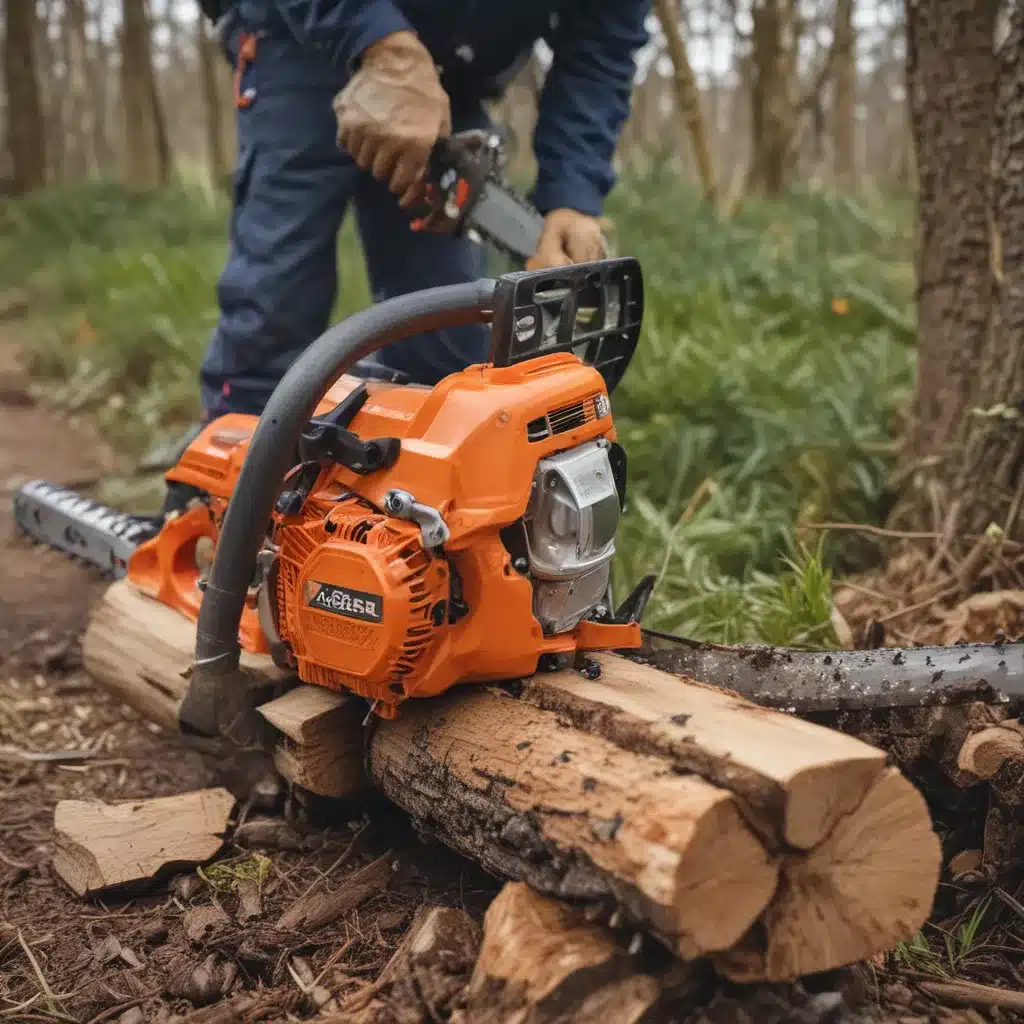
As an experienced forestry contractor, I know that managing fuel costs is a critical aspect of running a successful and sustainable operation. We learned this the hard way when dealing with challenging terrain during harvests… Chainsaws, being the workhorse of any logging or tree care business, play a significant role in determining your overall fuel consumption and profitability. In this comprehensive guide, I’ll share my insights on maximising fuel efficiency for your chainsaws, from engine design and fuel selection to cutting techniques and maintenance practices.
Now, this might seem counterintuitive when managing forest ecosystems…
Chainsaw Anatomy and Design
At the heart of any chainsaw is the engine, and the size of the engine directly impacts the power output and fuel consumption. Larger displacement engines, typically in the 40-60cc range, offer more torque and horsepower for tackling heavy-duty tasks like felling large trees or processing logs. However, these higher-powered saws also tend to be less fuel-efficient than their smaller counterparts.
Conversely, lighter-duty chainsaws in the 30-45cc range are often better suited for tasks like pruning, limbing, and clearing brush. These saws generally have lower fuel consumption, making them a more economical choice for day-to-day operations. When selecting a chainsaw for your forestry business, be sure to match the engine size and power to the specific needs of your work.
The length of the guide bar is another factor to consider. Longer bars, typically 20-24 inches, provide increased reach and cutting capacity but can consume more fuel per cut due to the greater chain speed and resistance. Shorter bars in the 16-18 inch range are often more fuel-efficient, especially when working in tighter spaces or with smaller diameter timber.
Finally, the fuel tank capacity of your chainsaws can have a significant impact on your overall fuel efficiency and productivity. Larger tanks, in the 12-16 oz range, allow for longer run times between refuelling, but they also add weight and can negatively affect the saw’s balance and handling. Smaller tanks in the 8-10 oz range may require more frequent stops to refuel, but the reduced weight can improve manoeuvrability and power-to-weight ratio.
Fuel Types and Mixtures
The type of fuel you use in your chainsaws can also have a substantial effect on fuel economy. Most modern two-stroke engines, including those found in chainsaws, are designed to run on a mixture of gasoline and two-stroke engine oil.
When it comes to gasoline, the octane rating is an important consideration. Higher octane fuels, such as 89 or 93 octane, are less prone to pre-ignition and can help improve engine performance and efficiency. However, the difference in fuel economy between regular 87 octane and premium 93 octane is typically negligible, so it’s generally not worth the extra cost unless your saw’s manufacturer specifically recommends a higher octane fuel.
The two-stroke oil ratio is another critical factor. Most chainsaw manufacturers recommend a fuel-to-oil mixture of 50:1 or 40:1, which helps lubricate the engine and prevent premature wear. Using the proper oil ratio is essential for maintaining engine health and maximising fuel efficiency.
Some forestry contractors may opt for ethanol-blended fuels, such as E10 (10% ethanol) or E15 (15% ethanol), in an effort to save money. While these fuels can be less expensive, the alcohol content can also be detrimental to the performance and longevity of your chainsaws. Ethanol can corrode fuel system components, leading to reduced power and increased fuel consumption. It’s generally recommended to use ethanol-free gasoline for your chainsaws whenever possible.
Operational Factors
The way you operate your chainsaws can have a significant impact on fuel efficiency. Proper cutting techniques, such as using the correct saw position and avoiding excessive idling, can help you get the most out of every tank of fuel.
When making cuts, try to maintain a steady, consistent pace rather than rapidly accelerating and decelerating the engine. Aggressive throttle application can significantly increase fuel consumption, as the saw has to work harder to overcome the increased resistance. Instead, use smooth, controlled movements and let the saw do the work.
The terrain and conditions you’re working in can also affect fuel economy. Cutting on steep slopes, in dense underbrush, or on hardwood logs will generally require more power and fuel than working on flat ground or with softer, easier-to-cut timber. Be mindful of the conditions and adjust your cutting approach accordingly.
Operator experience also plays a role in fuel efficiency. Seasoned forestry workers who have honed their techniques over the years tend to be more efficient with their chainsaws, using less fuel per cut than novice operators. Providing comprehensive training and mentorship for your crew can help improve overall fuel economy and productivity.
Maintenance and Optimisation
Proper maintenance is essential for ensuring your chainsaws operate at peak efficiency. Regular air filter cleaning or replacement, as well as spark plug checks and changes, can have a significant impact on fuel consumption.
Clogged air filters restrict airflow to the engine, forcing it to work harder and use more fuel. Checking and cleaning the filter after every job, or at least daily, can help optimise air intake and improve fuel economy. Similarly, worn or fouled spark plugs can impede combustion, leading to increased fuel usage. Replacing the spark plugs according to the manufacturer’s recommendations is a simple and cost-effective way to maintain optimal engine performance.
Keeping your chainsaw’s cutting chain in top condition is another crucial factor for fuel efficiency. A dull or improperly tensioned chain will bind and drag, requiring more power and fuel to make each cut. Regularly sharpening the chain teeth and ensuring proper chain tension can reduce the saw’s workload and improve overall fuel economy.
By implementing these strategies and staying diligent with your chainsaw maintenance, you can maximise fuel efficiency and keep your forestry operations running smoothly and profitably. For more information on sustainable forestry practices, logging techniques, and equipment management, be sure to visit Forestry Contracting.
Example: Sustainable Pine Harvesting Operation 2023

